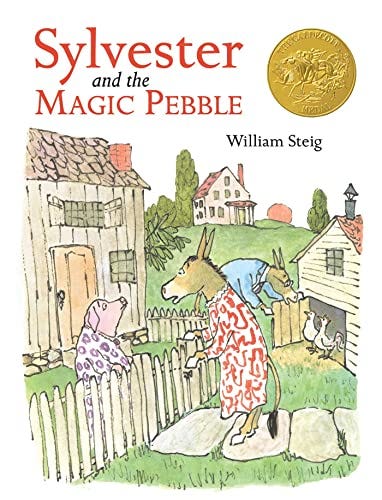Hi there!
I hope your week is off to a great start. Last weekend, children’s book author Mac Barnett came to Utah again (I think this may be the fourth time in the last year - we are lucky ducks) and, unlike all the other times in which I could only muster “I’m a huge fan” or “that was a great presentation,” this time I actually asked him a question:
“Do you have any advice for a debut author?”
He told me that no one knows how to talk about my books like I do, so it is important that I take initiative with marketing and events. He said that even after 20 years of doing this, he is still the one who sets up the bulk of his events. And even though it doesn’t necessarily come naturally to him, he’s learned to do it anyway.
You may think his advice was overwhelming because marketing is overwhelming. But it actually felt empowering — I can trust that I know how to talk about my book. And as I’ve worked on the final art for my first book, I’ve needed a reminder that I can trust myself and my sensibility as I face doubts and fears. I wanted to share that because maybe you need a reminder to trust yourself too. (Thanks Mac for a timely reminder!)
Speaking of someone who trusted his sensibility, let’s dive into part one of our William Steig study, shall we?
You can participate in my deep dive analysis by watching the video above (with pictures and my talking head) and/or reading the summary below. Also if you don’t want book spoilers, you can watch a read aloud of the book here.
William Steig was a famous self-taught New Yorker cartoonist who started making children’s books at 61 years old. Obviously he was meant for it as his work quickly won every major children’s book award out there. You may know him for the movie-inspiring SHREK! or National Book Award winning DOCTOR DE SOTO or the Caldecott award-winning book we are chatting about today: SYLVESTER AND THE MAGIC PEBBLE.
Published in 1969, this story is about a donkey who finds a magic pebble that grants him wishes as long as he is touching it. On his way home, he stumbles upon a lion, and in his fear, he accidentally wishes he was a rock. Because he can’t reach the magic pebble, he is stuck that way for a year until finally his parents have a picnic and unknowingly place the magic pebble on him. Sylvester wishes himself back and returns home with his family.
This deep dive was inspired by the question, “What makes this book so gosh darn satisfying?” As I read and analyzed, I picked up six picture book tricks that make the book satisfying to me.
Trick #1: Play with common tropes and truths.
I’ve seen lots of people interpret this story as “be careful what you wish for” but it is much more complicated and interesting than that. Sylvester didn’t do anything wrong – and yet something horrible still happened to him. He didn’t make a selfish wish. He just made a mistake. And that mistake had dire consequences. We like it when characters do something wrong and receive a consequence they deserve; it appeals to our sense of justice. But when an innocent and good character has something awful happen as a result of an accident, it only reminds us of our own helplessness. Steig loved to explore our helplessness a lot. But he doesn’t leave us there. He always leads us out to an empowered character or a moment of love that makes our helpless existence worth it.
Trick #2: Great lows lead to great highs.
Steig is not afraid to put his characters in horrible situations. His stories often explore circumstances in which characters are separated from their family. In this way, within the safe space of his stories, he encourages us to explore our deepest fears–like fear of loss, grief, pain, and abandonment. This story makes us sit in our fear and discomfort for an entire year! But because of this, when the reconciliation happens, it feels all the more satisfying.
Trick #3: Use visual contrast to build tension.
Steig is a master at using contrast to great effect. In this story, his character is a rock for a lot of it. A rock is stagnant, unmoving. So what does Steig do to build tension if his character can’t move? He makes everything else change around it, further emphasizing Sylvester’s hopeless situation. As the seasons change, Sylvester is stuck. The contrast between Sylvester’s external world and himself builds tension to the big moment of his parent’s picnic.
Trick #4: Tell us how your character feels without telling us.
In Sylvester’s darkest moment, a wolf sits next to him and howls. The cold winter paired with the howling, hungry wolf reaches right into our heart. We automatically sense this is the lowest of the lows without Steig saying, “Sylvester feels the worst he’s ever felt.” But again the more alone we feel, the more we will feel the togetherness at the end. Brilliant.
Trick #5: A reader will immediately engage if they know something the character doesn’t know.
And now the big picnic moment arrives. We know Sylvester is the rock. His parents do not. So after we’ve watched them grieve for a year, when they sit down, we want to yell at the page, “It’s Sylvester!” And we wonder how they will know the rock is their son. Even though it only takes place in two spreads, the waiting feels unbearable. The two spreads feel longer than the year! But that’s what makes the transformation so satisfying. We are engaged because we know something the characters don’t and we want to see how they will find out.
Trick #6: Give characters what they need rather than what they want.
Sylvester received a pebble that represents everything he could ever want. But that goes all wrong and after it is made right, the last line says, “when they had eventually calmed down a bit, and had gotten home Mr. Duncan put the magic pebble in an iron safe. Some day they might want to use it, but really, for now, what more could they wish for? They all had all that they wanted.” Why does Steig take the time to tell us what they did with the pebble? I think it is because he wanted to emphasize his characters already had everything they needed all along. And a good dose of separation helped them appreciate it all the more.
Bonus: You ending can be meaningful without being preachy.
Within the safety of his story, Steig empowers us to simultaneously accept our fears of abandonment and loss AND our appreciation of what we have. Without feeling preachy about it. Pretty cool, right?
Alright, now it is your turn. I’d love to hear what you think about this book or my analysis in the comments. What makes this book so satisfying for you?
Thanks for sitting with me AT THE KID TABLE today. Because I read basically every children’s book William Steig made and learned so much, this study is going to have multiple parts; I hope each one makes you fall in love with Steig and picture books in general because that is my super secret goal…I want picture books to take over the world!
I’ll save you a seat next week when we dive into Steig’s THE AMAZING BONE and DOCTOR DE SOTO.
Your picture-book-evil-villain friend,
Rachel








Share this post